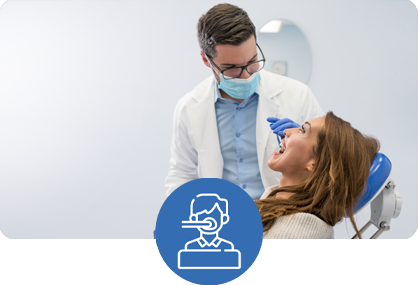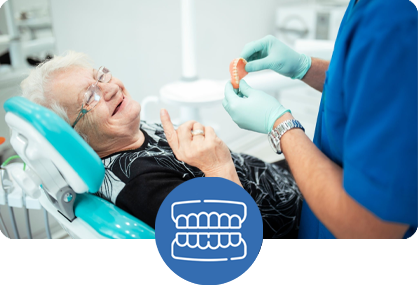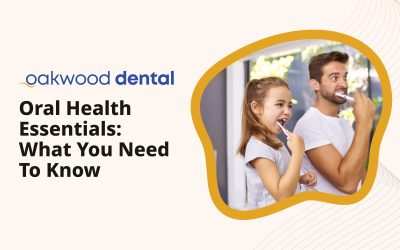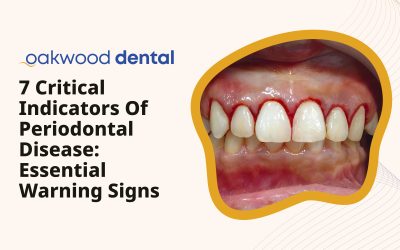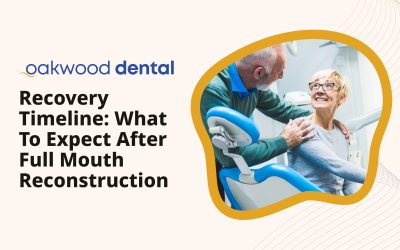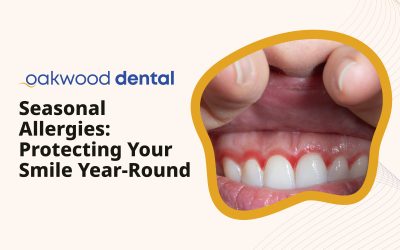Key Takeaways:
- Sedation dentistry alleviates anxiety during dental procedures, enabling successful treatment completion
- Patient safety is our highest priority through thorough evaluation and continuous monitoring
- We provide multiple sedation options tailored to each patient’s specific needs
- Our clinical team maintains advanced certification in sedation techniques and emergency response
- Professional monitoring equipment tracks vital signs throughout the entire procedure
- We ensure patients fully understand and consent to the sedation plan before beginning treatment
1. Thorough Patient Assessment
At Oakwood Dental, we conduct comprehensive pre-sedation evaluations that include a complete review of your medical history, current medications, and anxiety levels. This detailed assessment allows us to determine the safest and most effective sedation approach for your comfort during dental treatment. Our goal is to ensure the sedation method selected is appropriate for your individual health profile.
Our evaluation process examines your overall health status, existing medical conditions, potential medication interactions, allergies, and previous experiences with sedation. This evidence-based approach to our sedation dentistry ensures personalized care tailored to each patient’s specific health needs and procedural requirements, with safety as our paramount concern.
2. Appropriate Sedation Level Selection
We offer various sedation options calibrated to ensure optimal comfort and safety:
- Minimal sedation: Using nitrous oxide (laughing gas) to promote relaxation while maintaining full consciousness. Ideal for minor procedures or patients with mild anxiety.
- Moderate sedation: Produces deeper relaxation while maintaining verbal responsiveness. Suitable for more complex procedures or moderate anxiety cases.
- Deep sedation: Reserved for comprehensive procedures or severe dental phobia. Creates a near-sleep state with limited procedural recall.
Our selection criteria incorporate procedure complexity, your health status, and anxiety assessment. For example, Our sedation protocols for patients with special needs are thoughtfully developed to ensure a comfortable and relaxed dental experience, tailored to meet the unique needs of each individual.
3. Continuous Patient Monitoring
Throughout sedation procedures, we maintain vigilant monitoring using advanced technology to assess:
- Oxygen saturation levels
- Blood pressure measurements
- Heart rate and rhythm
- Respiratory rate and pattern
This continuous physiological assessment enables early detection of potential concerns, ensuring prompt intervention and maintaining your safety throughout the treatment process.
4. Advanced Clinical Team Training
Our sedation practitioners maintain rigorous credentials:
Our team holds advanced certification in cardiac life support and emergency management protocols. Additionally, we maintain specialized training in pediatric and special needs sedation techniques. We regularly participate in continuing education to remain current with evolving sedation best practices and emerging technologies.
Our general dentistry professionals maintain comprehensive expertise across multiple disciplines, enabling integrated care delivery within a single clinical setting.
5. Emergency Response Protocols
While complications are rare, our preparedness is comprehensive:
Our facility is equipped with reversal medications to quickly and safely counteract sedative effects, when necessary. We also have advanced resuscitation equipment, including defibrillators and emergency medications, available for immediate use. To ensure the highest level of care, our clinical team regularly participates in emergency simulation drills, ensuring a swift and coordinated response in any situation.
6. Clear Patient Communication
We prioritize transparent communication throughout your care:
Our pre-procedure consultations detail what to expect before, during, and after sedation. We provide a thorough explanation of both benefits and potential risks. We encourage questions to ensure your comfort and build trust. This communication approach reduces anxiety and enhances your overall treatment experience.
7. Proper Fasting Guidelines
To ensure your safety during sedation, we implement evidence-based fasting protocols:
Standard guidelines recommend restricting solid foods for 6-8 hours prior to your procedure. Clear liquids may be permitted up to 2 hours before sedation, depending on the sedation level. Modified protocols are available for patients with specific medical considerations, such as diabetes or other metabolic conditions. Please consult with your operator to discuss any tailored instructions based on your individual needs.
8. Medication Management Protocols
Our medication administration follows strict safety parameters:
Dosage calculations incorporate your weight, age, and health status factors. We utilize careful, incremental administration with continuous monitoring of your response. Reversal medications remain immediately accessible throughout the procedure as an additional safety measure.
For patients with special needs, we employ specialized sedation protocols designed to optimize comfort while maintaining the highest safety standards.
9. Post-Procedure Monitoring
Our care extends comprehensively into the recovery phase:
You’ll recover in a dedicated monitoring area with continuous observation until discharge criteria are met. Your vital signs and level of alertness are systematically evaluated throughout recovery. We provide detailed post-procedure instructions addressing dietary guidelines, activity restrictions, and potential symptoms that would warrant contacting our office.
10. Comprehensive Documentation
We maintain detailed clinical records:
Our documentation includes pre-sedation assessments, monitoring data throughout your procedure, and post-operative recovery observations. Follow-up protocols ensure continued assessment after you return home.
11. Team Communication
Clear communication among our team remains essential to our safety protocols:
Pre-procedure briefings establish your status and treatment objectives. Clear role assignments ensure everyone knows their responsibilities during your care. Post-procedure reviews facilitate continuous quality improvement and protocol refinement.
12. Ongoing Quality Improvement
Our commitment to excellence drives continuous enhancement:
We incorporate current research findings into our clinical protocols. Patient feedback informs our service improvements. Ongoing professional development ensures our team maintains current knowledge of best sedation practices.
This quality improvement framework extends across all our services, including specialized treatments such as periodontal therapy and other advanced procedures.
Conclusion
At Oakwood Dental, our commitment to sedation dentistry excellence combines thorough patient assessment, appropriate sedation selection, and vigilant monitoring to create a safe, anxiety-reduced treatment environment. This comprehensive approach transforms potentially stressful dental experiences into comfortable, manageable visits.
Whether you require dental implant therapy or other complex procedures, our sedation protocols can significantly enhance your treatment experience. Our dedication to continuous improvement ensures that our methods reflect current best practices and professional standards. For additional information or to schedule a consultation, please contact our office. We are committed to helping you achieve optimal oral health in a comfortable, supportive environment.

 718-979-2121
718-979-2121